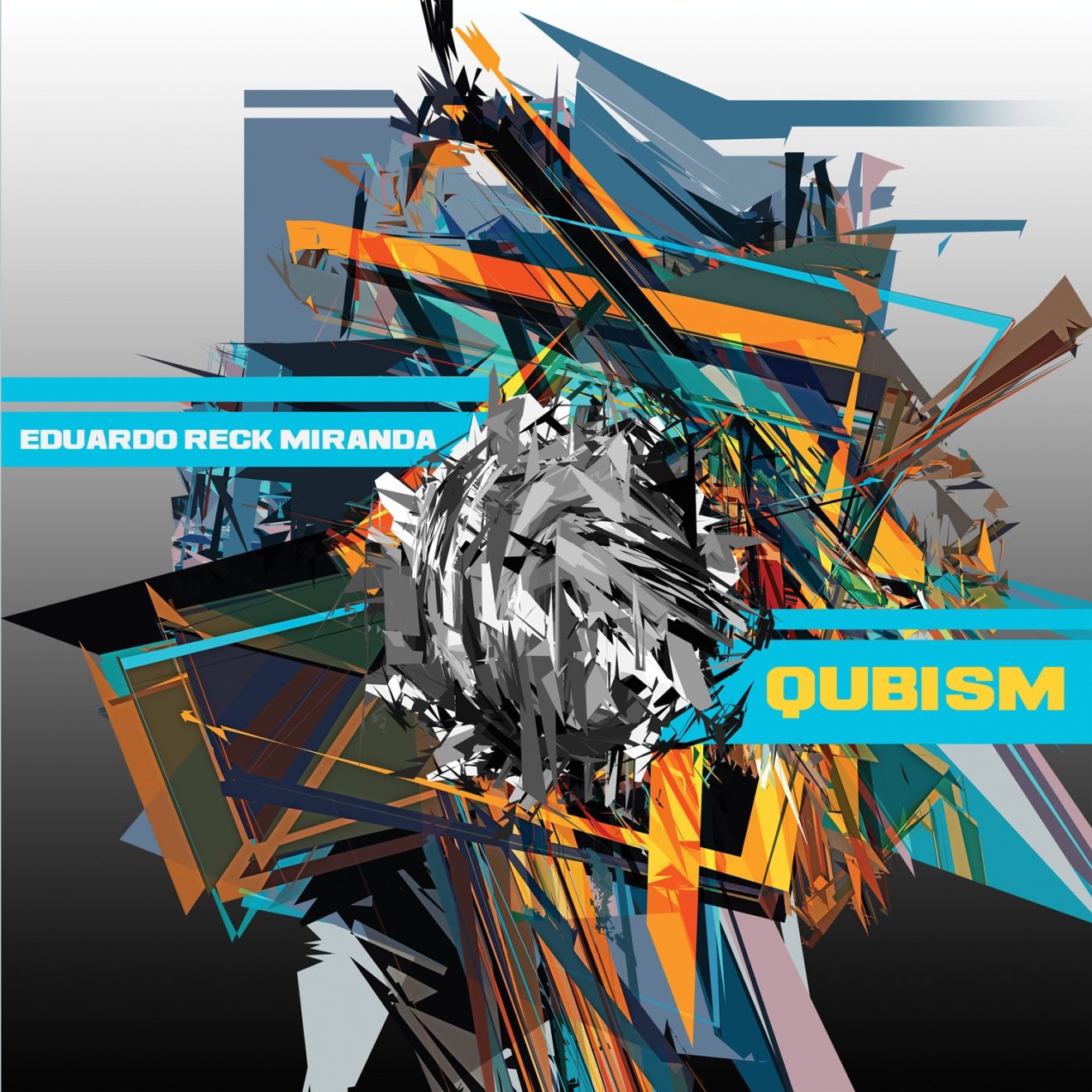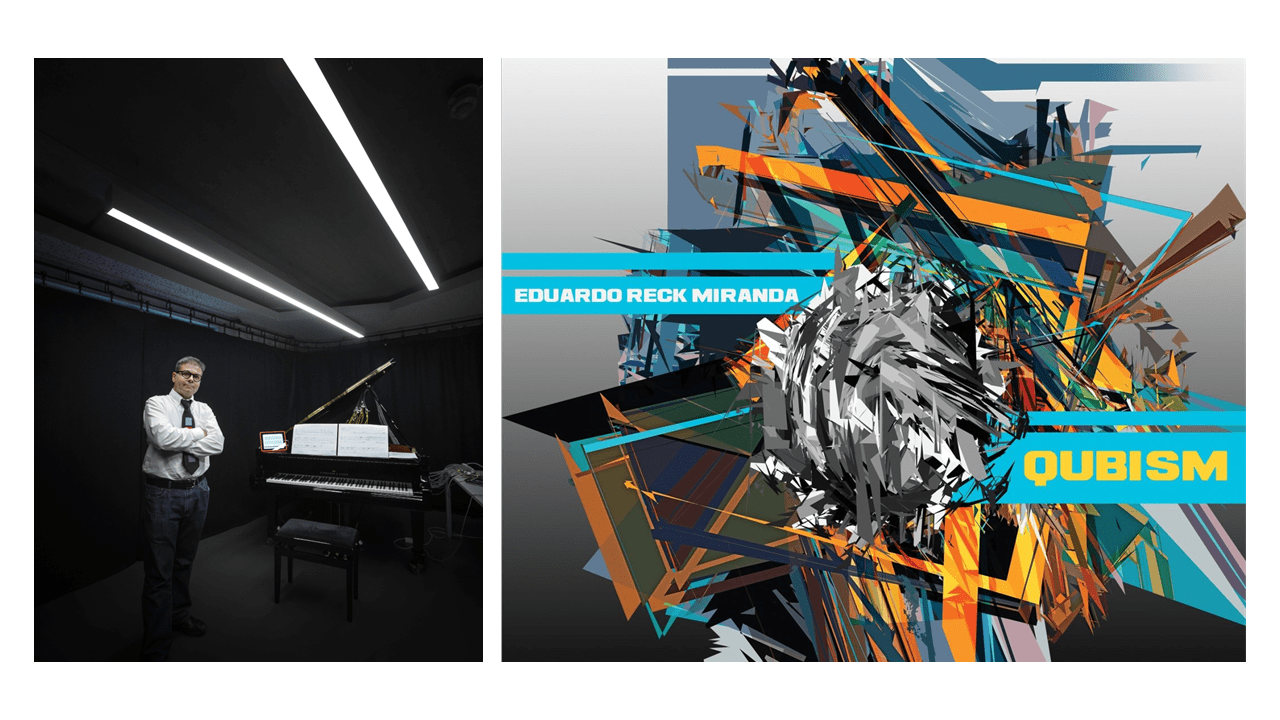“The music produced with AI is mediocre in comparison with what I can do with quantum computing. Quantum computers react to my tones, creating innovative sounds that classical AI cannot produce without needing big data models.”
We all know that quantum computing is rapidly emerging as part of the next generation of high-performance computing to help solve industrial and societal most pressing problems. However, only a few people know that this promising super tool can also be regarded as a musical instrument.
Professor and composer Eduardo Miranda, from the University of Plymouth in the UK, has been mastering the “sound of the qubits” to create music using Quandela’s photonic QPU Altair on the Cloud. Some of his photonic compositions were recently released in an album called Qubism.

But how can harmonies and tones emerge by programming a QPU? The interaction between music and computers is as old as computers themselves. Already in the 40s, Australian researchers Geoff Hill and Trevor Pearcey connected a loudspeaker to a CSRIR Mk1, which was then frontier technology, to test its performance. This was the first time a digital computer was used to create a piece of music.
“The integration of technology and music has been—for years—a transformative process, consistently altering the way music is expressed and consumed, revolutionizing and creating new genres,” Professor Miranda explains. “With the advent of quantum computing, the music industry is witnessing unprecedented innovation, reshaping our perception of the creative process.”
Beating the beat with photonic qubits
Professor Miranda designs algorithms that produce patterns of data mapping these data into musical notes. “I visualize these patterns and see how they behave in time if they are interesting enough to create a piece of music. Then I say: ok this can be the behavior of a sound, it can be interpreted as going up or down in pitch or a sound that goes softer to louder, or a melody that is complex or less complex.”
The famous composer explores different ways to achieve his goals: One way is connecting a synthesizer to the computer, then he plays a melody in the synthesizer, and the computer, which has been programmed, translates—according to specific rules created by the musician—to new sounds. “What is interesting for me is that, with quantum computers, I get completely new melodies that I would not be able to make, or nobody else, because it is so exclusive of this particular process and this is the exciting part: that I can use the QPU to create unique pieces, different from anything else.”
Another technique is to program the quantum computer to generate random notes and reject those that do not satisfy given rules. “You can use a probability distribution to pick specific elements from a given set, for example, a Gaussian distribution over a sequence 8 notes will give priority to higher occurrences of the notes.” In this approach, the composer creates rules relating elements of computation with musical structures, like playing a game. “Just like when you map a problem into algorithms to generate a result to solve a problem in chemistry or in engineering, you can also map the music rules to generate more music.”
Professor Miranda builds a photonic circuit using beam splitters with angles representing the probability of having some notes after some other notes. “Then I say to the system: ok system, if I play this note, which note would you play back? So, I play a short melody to the system and the system responds with an entirely new composition.”
How qubits beat classical AI when it comes to composing music
Professor Miranda has a successful career composing symphonies and operas with AI, before exploring quantum computing. “Something that is very important is that machine learning today needs an enormous amount of data to be trained, while with quantum computing you don’t need lots of data, I can program the quantum computer to get a response right away. Quandela’s photonic beam splitters can encode everything I need, I don’t need large neural networks like with classical computers.” He explains that as for the creative process, big data machine learning methods produce average sounds, “the music they produce is mediocre in comparison with what I can do with quantum computing. Quantum computers react to my tones, creating innovative sounds that classical AI cannot produce without needing big data models.”
Quantum computing as a new way of thinking
“I became fascinated by this new idea [of quantum computing] and my main interest is not so much about speed or supremacy. I am interested in new ways of thinking and quantum computing provides a real new way of thinking about how you develop a generative system, how you develop real probabilistic systems, and that provides new data that is impossible to obtain with a classical computer. “
Quantum computing represents a new paradigm for creativity beyond classical methods. “It is not just programming, you can actually play the quantum computer, as an instrument, and create music you will only hear at the moment and may not be repeated ever again.”
Would you like to program a quantum computer? Register on our Quandela Cloud and start for free!

